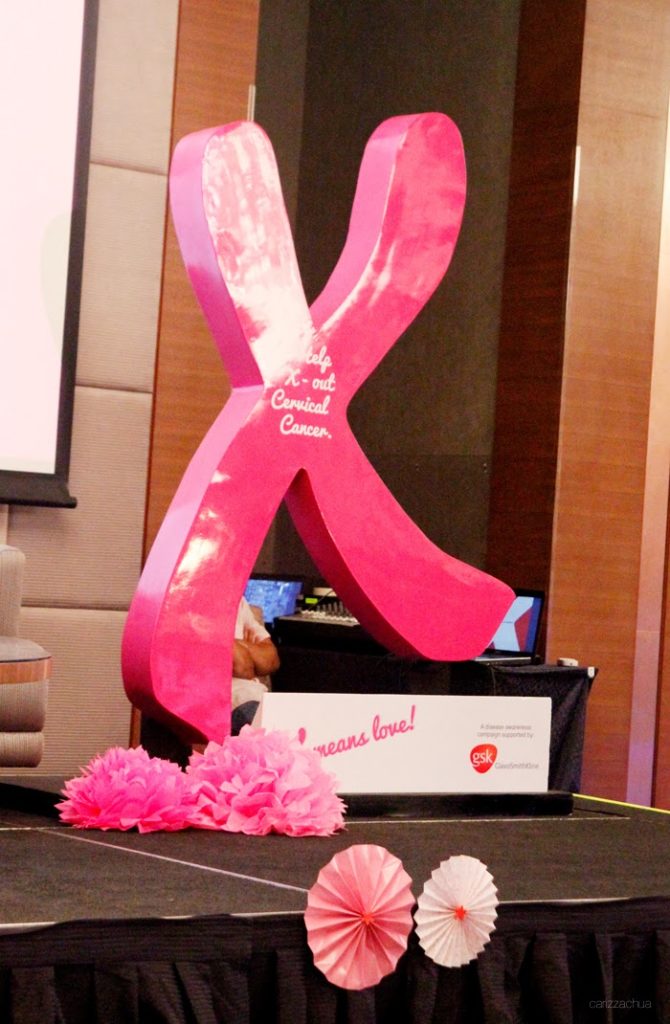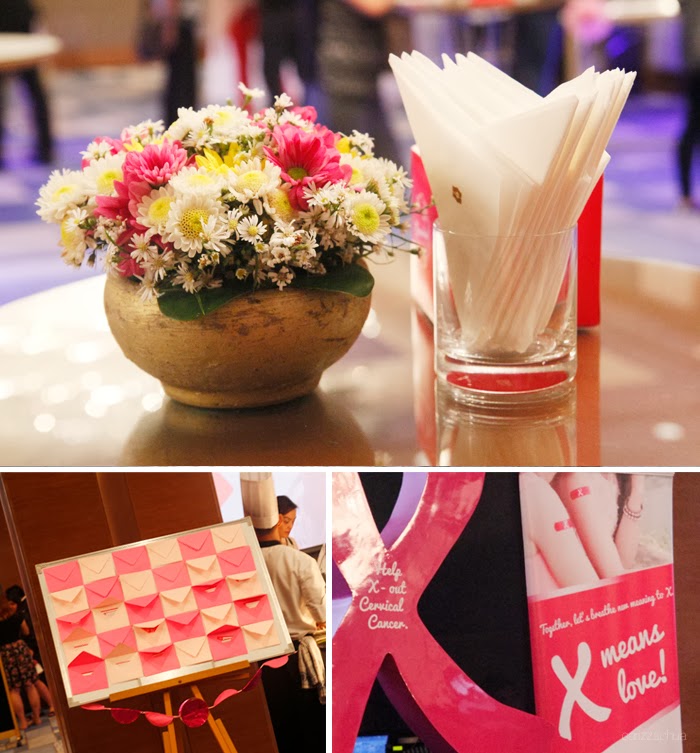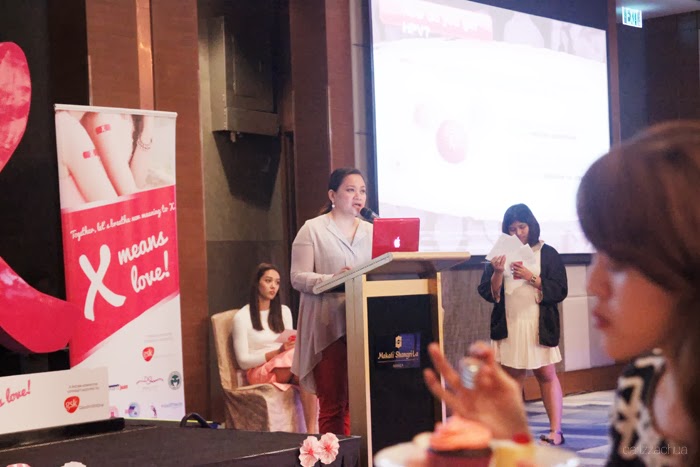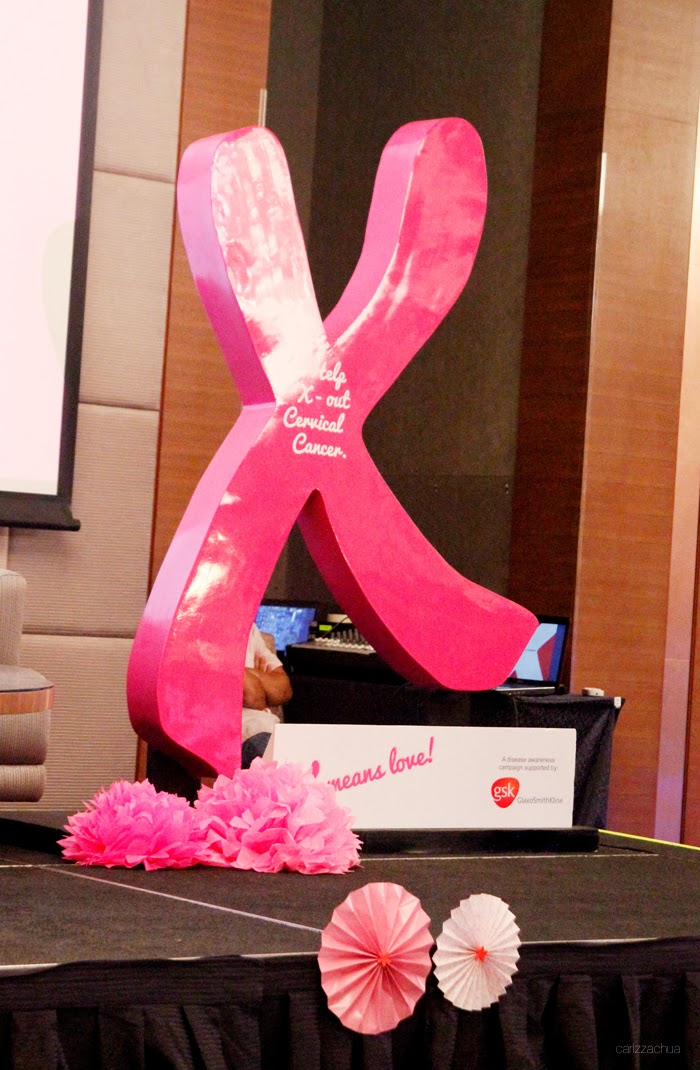Attended Andi Manzano’s bridal shower at Makati Shangri-La Hotel. The gorgeous Magic 89.9 radio DJ, TV/events host and former MTV VJ, is now embarking on another adventure in her already exciting life – marriage. And because of this, Andi deems it imperative to be healthy as a way of showing her love for the family that she will soon be building with her husband-to-be.

In contrast to the traditional bridal shower parties where fanfare and tease are the main highlight for the bride-to-be, Andi held a “X Bridal Shower Fair”, as one of the ambassadors of the “X Means Love”, that aims to empower women through increasing awareness and driving urgency to fight cervical cancer.

As she X-es out her single status, she also X-es out cervical cancer from her life. And as she becomes a bride and prepares to be a mother, Andi strongly encourages women to proactively take action on protecting themselves from cervical cancer through screening and vaccination.



With Rhea, Andi Manzano, and Bianca. Photo from Rhea Bue.
‘X Means Love’ aims to increase awareness in preventing cervical cancer, or cancer in the cervix (the lower, narrow part of the uterus or the womb), and is supported by GlaxoSmithKline and Healthway Medical.
“I decided to do this advocacy because early this year my mom was diagnosed with cervical cancer. It took us all by surprise and it was truthfully a very difficult time in our lives. She went through all the motions from the chemo to radiation treatments and by the grace of God, she’s been cured and is in remission,” Andi admits.

“This entire experience made me very passionate about cervical cancer. The silver lining in all of this is that this type of cancer is one of the easiest to treat if detected early. I want to be at the forefront of educating women about its prevention, detection and to try to help find a cure for cancer in all its forms,” the doting daughter says.

Games prepared for us


Yummy treats I could not resist
Cancer of the cervix is the second most common cancer among women worldwide, with an estimated 529,409 new cases and 274,883 deaths in 2008. In the Philippines, cervical cancer ranks as the second most frequent cancer among women. It is estimated that every year, 4,544 Pinays are diagnosed with cervical cancer and 1,856 die from the disease.
Because I am also concerned about you, I would like to share some helpful information about cervical cancer that you might need to know:
What is Cervical Cancer and why worry about it?
• Cervical cancer is cancer in the cervix, the lower, narrow part of the uterus (womb).
• Cancer of the cervix is the second most common cancer among women worldwide.
• In the Philippines, cervical cancer ranks as the 2nd most frequent cancer among women and it is estimated that every year 4544 women are diagnosed with cervical cancer and 1856 die from the disease.1, • In its early stage, cervical cancer may have no signs or symptoms.
• The incidence of cervical cancer starts rising steeply at age 30 and is highest in women ages 40-55 years. These women who are diagnosed with cancer die early, at the time when their children are growing, at the time when their kids need the guidance and caring of their mothers. These women are at the peak of their careers and maybe just starting to enjoy life.


What causes Cervical Cancer and how do you get it?
• The Human Papillomavirus (HPV) is a necessary cause of cervical cancer.
• Genital HPV is a common, highly transmissible virus that is passed through direct skin-to-skin contact during sexual activity. Sexual intercourse is the primary route of transmission of genital HPV infection.1, Most sexually active people will get HPV at some time in their lives, though most will never know it.
• About 9.3% of womenare estimated to harbour cervical HPV infection at a given time.
• An estimate of 80% of women will acquire an HPV infection in their lifetime. Regardless of age, lifestyle or socio-economic status, every woman is at risk of the cancer-causing HPV infection, which may lead to cervical cancer.
• Whereas most HPV infections are transient and benign, persistent genital infection with certain HPV types can lead to the development of anogenital precancers and cancers.
• Precancerous lesions usually develop 5 years after HPV infection. The time interval between initial HPV infection and development of cervical cancer averages 20 years. Most cases of cervical cancer are diagnosed in women aged 40 years.

With Andy, Bianca, Kim, Helen, and Rhea
Cervical cancer can be prevented through screening and HPV vaccination. HPV vaccines are safe and effective. They are most efficacious in females who are naive to vaccine-related HPV types. It does not eliminate the need for screening later in life, since HPV types (other than 16 and 18) cause up to 30 percent of all cases of cervical cancer.

I’ll be having my first vaccine this month to prevent this cancer. Second would be next month, then I should have the last vaccine after 6 months. I hope you do the same as well soon.
Stay pretty and healthy!
For more information about cervical cancer, consult your health care provider and your personal doctor, your partners in women’s health.
Last Updated on 9 years by Carizza


Leave a Reply